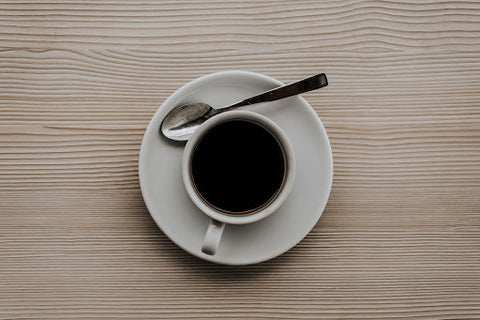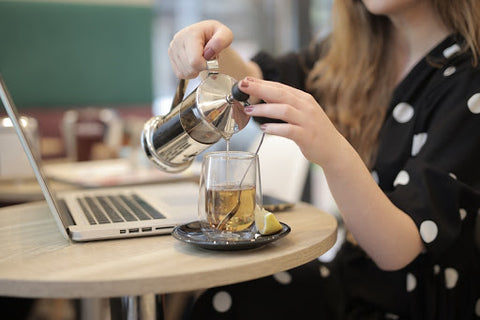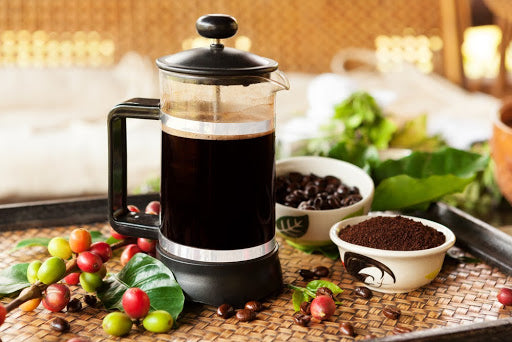There are lots of different ways to make and enjoy a cup of coffee.
You can brew a large pot with an automatic coffee maker. You can brew it on the stove, you can use the pour over method, or you can make cold brew using a pitcher in the fridge.
You can get fancy with a milk frother, enjoy a latte, make espresso, or have a cappuccino. And, when you’re in a rush, you can even brew a single-serve cup with a convenient pod.
For real coffee fanatics (who would never even consider popping a k-cup into an automatic brewer), one of the best ways to brew a cup or two is with a French Press.
The French press has been around for more than a century. Yet the coffee gurus of the world have made some adaptations to this method by introducing an electric French press.
If you’re a fan of the French press method, is it finally time to step up from your manual press to a new electric version?
Not so fast …
If you’re considering ditching your traditional French press in favor of an electric version, keep reading.
Here are the pros and cons of the electric French press that you need to know before you change your daily coffee routine.
What is a French Press?
The French press was originally created by two French inventors back in 1852. But the official patent for the French press, as we know it today, went to two Italian designers in 1928. And it is that 1928 version that we still use today.
Over the past century, the French press has become a popular method for coffee brewing all across Europe and the U.S.
Coffee lovers everywhere agree that the French press makes an excellent cup of coffee.
But is it really any better than an easy-to-make drip brew?
One main distinction between French press coffee and drip coffee is that you get the full flavor of the grounds without any impurities.
With drip coffee machines, you add coffee grounds to a filter and allow hot water to wash over the ground coffee, dripping down to fill your carafe. With the drip method, the filter is necessary to absorb the coffee grinds, but it also absorbs the oils in those grounds.
The French press works a bit differently. The coffee does not drip down through a filter. Instead, you fill the carafe itself with coffee grounds. Let them steep, and use a stainless steel plunger to bring the coffee (and its tasty oils) to the top of the carafe.
The final result is a steeped cup of great coffee. Rich with tiny bits of coffee grounds that coffee drinkers say make for a superior cup.
What's your usual coffee drink? If you aren't sure, check out How to Compare Coffee Drinks and Find Your Go-To.
The Best French Presses to Buy For Your Home
There are various French press coffee makers on the market, but there are three that coffee drinkers around the world have come to love.
The Bodum Chambord French press is one of the original French press machines. You'll find it in homes, restaurants, hotels, and coffee shops everywhere. Its design is simple, sleek, and classic. It’s easy to clean, easy to use.
Made of borosilicate glass and stainless steel, the Bodum Chambord is one of the most effective methods for brewing a stellar cup of coffee.
The Frieling French Press is another great option, made entirely of 18/10 stainless steel. With the look of a polished metal pitcher, this stainless steel French press can brew coffee, tea, or serve cold drinks. It also features double-wall construction to keep your coffee warm for a longer amount of time.
The KONA French press also gets high marks as one of the best French presses on the market. This French press features a glass carafe, stainless steel components, and a web-like outer casing that gives it a cool, modern look.
How Do You Make Coffee in a French Press?
Owning a traditional coffee press isn’t as brainless as owning an automated drip coffee maker. You actually need to know how to use it.
Ready to learn?
Here’s how to make coffee in a traditional French press:
- Boil water to 204 degrees Fahrenheit. Use a grinder to turn 24g of freshly roasted coffee beans to a coarse texture.
- Pour 300ml of water into your French press to preheat. After 30 seconds, add your 24g of coffee. Fill the press with water until the coffee reaches the bottom of the pour spout.
- After about 3 ½ minutes, stir the top crust of the coffee for about ten seconds.
- Attach the top lid and plunge for about 20 seconds.
Pour into a cup and enjoy!
Wondering what roast level to brew up in your new French press? Read: When and How to Drink Light Roast Coffee.
Does the French Press Make a Better Cup?
Many coffee lovers will tell you that their preferred cup of coffee is one made in a French press.
Why?
Because it allows you to have more control over the brewing process and extracts better flavor than a drip machine.
French press fans that take their coffee seriously appreciate that level of control. In fact, most like to control every step of the process, from grinding their own beans to heating the water to the perfect temp.
The French press allows you to get the most out of your beans, as the coffee grounds are not filtered out, and the oils in them enhance the coffee taste. The result is a more natural and more robust cup, perfect for the coffee drinker who really wants to savor the beans' flavor.
Does it take more time than brewing a single pod or pressing a button on an automatic machine?
Of course. But there’s something to be said for the ceremonial aspect of heating the water in a tea kettle, pouring it into your press, and plunging it yourself.
Those steps enhance the flavor, but they also add to the experience.
Related: What You Should Know About French Coffee
How is the Electric French Press Different from a Regular French Press?

If the traditional French press makes such a superior cup, what's so great about using an electric French press? Is it really all that different?
The answer is no.
There is only one significant difference between how an electric French press works vs. an electric one: the extra kettle.
The first step in the French press process is to boil water — and you'll need a separate stovetop kettle to do that. On the other hand, the electric French press includes a heating element so you can add cold water and let it heat on its own.
Once the water is hot enough, it will start to saturate the grounds. Beyond that, you’ll still need to wait for the three to four minutes of brew time and plunge it yourself before you can pour a cup.
Feel even better about that daily cuppa knowing — coffee has more fiber than orange juice!
Don’t Let the Name Fool You
The electric French press coffee maker may seem like a fancy new coffee-making option, but it isn’t all that different from the traditional. It is not like an automated drip machine with dozens of features, timers, and various settings.
The only component that’s automated is the fact that it heats the water for you. It won’t brew your coffee any faster.
The only thing it changes is the need to heat water in a kettle. And if you go to great lengths to make sure that your water heats to the optimal 204-degree temperature, you'll lose that element of control.
An electric French press heats the water to the temperature it's built to. You can't control it. Depending on the press you buy, it may make your water colder or hotter than you prefer.
If you like to be in control of every part possible during the brew — you may be a coffee connoisseur!
The Pros of the Electric French Press
Not sure if you’re ready to switch from a traditional French press to an electric one?
Here are some of the benefits, and why you might want to consider trying the electric method.
Ease of Use
There's no question that an electric French press removes one step in the brewing process: the need to boil water. Eliminating the need to boil water makes the electric version easy to use, but you'll still have to stir your coffee and plunge the grounds.
Can Also Make Tea
If you’re a tea drinker, you can also use an electric French press to brew tea leaves. The plunger method works to separate the tea leaves just as it does with coffee grounds, leaving you a perfectly steeped cup of tea every time.
Larger Capacity
Some electric French presses come in large sizes, allowing you to brew multiple cups at a time. This is a benefit if you need to make numerous cups or have a roommate or a partner who wants to join you in your morning coffee routine.
If you're tired of using a traditional French press that only makes two or three cups of coffee at a time, some electric presses brew a larger amount.
No Need for Filters
Whether it's electric or not, the French press does not require the use of disposable coffee filters. They contain a reusable steel filter instead. Unlike an automated drip machine, you'll never have to worry that you're out of filters when it's time to make your morning cup.
The Cons of the Electric French Press

Unless boiling water in a kettle is what's preventing you from using a French press, we think the electric version has more cons than pros.
Less Control Over the Brewing Process
By heating the water automatically, you instantly give up some control in the brewing process. A traditional French press allows you to add water at your desired temp. An electric French press controls the water temp for you.
More Expensive Than a Manual French Press
Electric French presses are considerably more expensive than manual ones. If you’re on a budget, it’s best to stick with a regular press, such as the Bodum Chambord, which retails for just $39.99.
Mechanical Parts Can Malfunction
Electric machines have mechanical parts, and that means there's always a chance those parts will malfunction. Almost all manufacturers sell replacement parts. But it can be cheaper to buy an entirely new manual press than to go through the trouble of purchasing new pieces for an electric one.
More Parts to Clean
With an electric French press, there are more parts to clean. With a traditional press, you’ll still have to clean your carafe, plunger, lid, filter, and kettle. But with an electric machine, you’ll also need to clean the interior parts as well.
If you’re looking to cut down on cleaning time, make sure your French press comes with dishwasher-safe parts.
Can’t Take it With You
We’ve seen lots of coffee fanatics travel out of town with their own mini French press. Unfortunately, the electric French press machine isn’t exactly ideal for travel.
You may also like: How To Choose a Coffee Blend.
Which Electric French Press Should You Buy?
Many manufacturers make a version of the electric French press. There are several models to check out if you're considering switching from a manual to an electric model.
Bodum Bistro Electric French Press
We love the traditional Bodum Chambord French Press, so it makes sense that we would rely on Bodum to make a great electric version. The Bodum Bistro Electric French Press features a double-beaker design, one that heats the water, and one that brews the coffee. When the coffee is ready, just press down on the plunger lid and pour a cup.
Bunn Trifecta MB
The Bunn Trifecta MB coffee maker creates a French press-style cup of coffee in an entirely new way. This machine includes two plastic brew chambers, one of which is a French press pitcher. You can select different brew times, brew both coffee and tea, and set different turbulence levels for each cup. It has a great look, and it functions well, but it’s pricey at its MSRP of $559.
Mr. Coffee Technique + Taste Electric French Press
Whether you’re making coffee or tea, the Mr. Coffee Technique + Taste Electric French Press is incredibly easy to use. Just plug it in, add water, set your desired water temperature, and add your coffee grounds. After brewing, plunge the top lid and pour a cup!
The Bottom Line
So is it worth it to invest in an electric French press?
An electric press will heat the water for you, but it won’t stir, plunge, or pour your coffee. You’ll still need to do those steps yourself.
Our suggestions?
- Stick with the regular French press so you can have ultimate control over the water temp and brew process.
- If you’re ever in the Sonoma County area, drop by our shop! Our employees would love to chat you up about brewing methods and help you pick out some whole beans to take home.
After all, the best coffee isn’t just about drinking it — it’s also about knowing how to make it for yourself!
